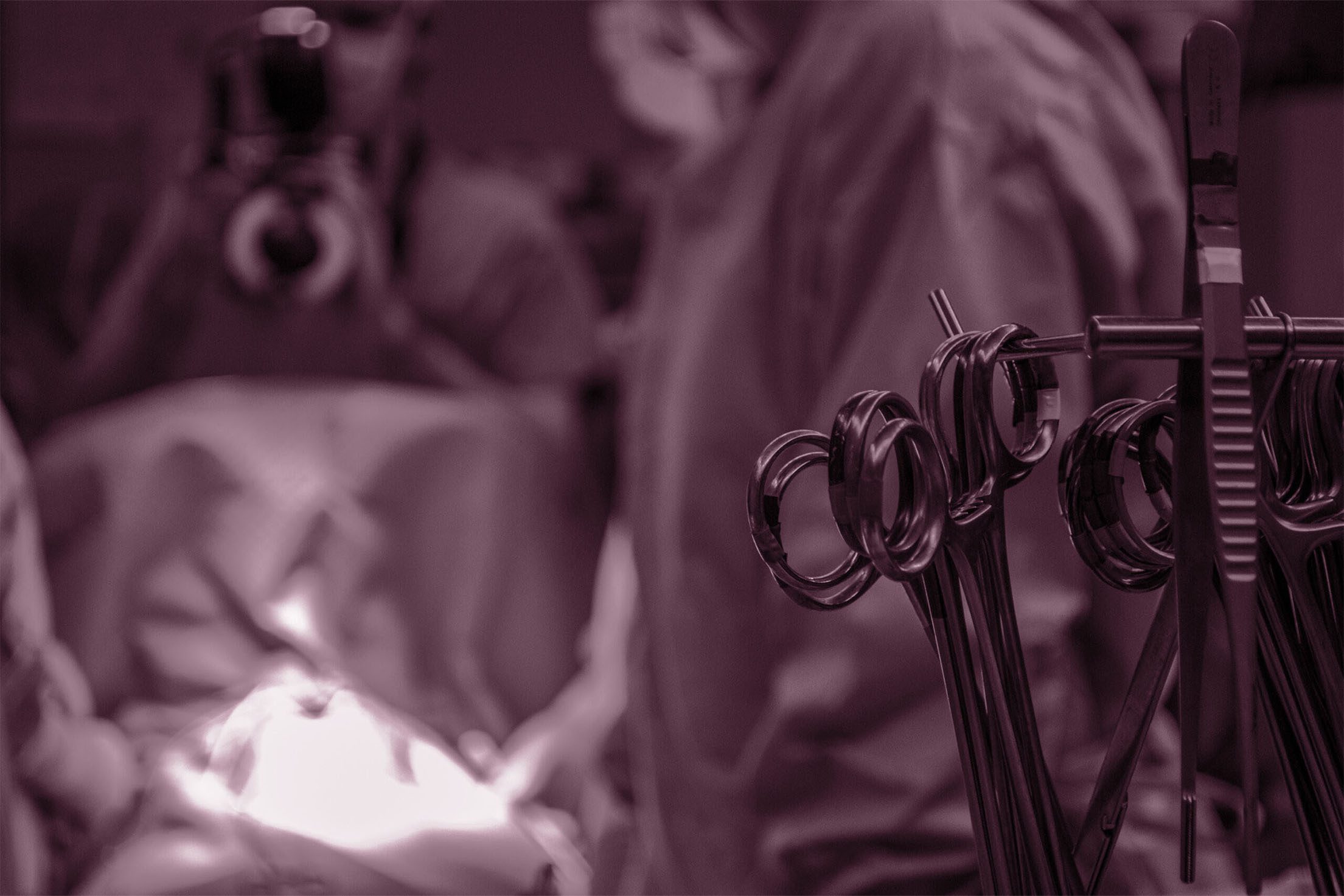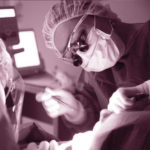
When faced with a breast cancer diagnosis, one of the most difficult decisions a woman may encounter is whether to remove one or both breasts. At Texas Breast Center, we understand the weight of this decision and the importance of making a choice that aligns with your personal health needs. Our team is dedicated to providing clear, evidence-based guidance tailored to each individual. If you’re navigating this complex choice, schedule an appointment with Texas Breast Center to discuss your options with our experienced breast surgeon, Dr. Gorman.
Is Getting Both Breasts Removed Necessary or Wise?
A recent study published in JAMA Oncology by Dr. Vasily Giannakeas, Dr. David W. Lim, and Dr. Steven A. Narod delved into the long-term outcomes of various surgical treatments for unilateral breast cancer. The study, one of the largest of its kind, followed 661,270 women for up to 20 years, analyzing the effects of lumpectomy, unilateral mastectomy, and bilateral mastectomy on breast cancer mortality.
The findings were particularly insightful: while bilateral mastectomy significantly reduced the risk of developing contralateral (opposite side) breast cancer, it did not decrease the overall mortality rate from breast cancer. This outcome challenges the commonly held belief that removing both breasts can provide a survival advantage for women diagnosed with cancer in one breast. The study’s results emphasize the importance of understanding the implications of each surgical option, particularly in terms of long-term survival.
The findings from this study reinforce the importance of personalized care when it comes to breast cancer treatment. At Texas Breast Center, Dr. Gorman is dedicated to helping each patient understand the implications of their surgical options, ensuring that decisions are made with both long-term outcomes and individual needs in mind.
Why Is There No Difference in Mortality Rates Among the Surgical Options?
One of the most surprising aspects of the study is the lack of difference in breast cancer mortality rates between the different surgical groups. Whether a woman chose a lumpectomy, which is often followed by radiation therapy, unilateral mastectomy, or bilateral mastectomy, her chances of dying from breast cancer were nearly identical over the 20-year follow-up period. Specifically, the breast cancer mortality rates were 8.54% for those who underwent a lumpectomy, 9.07% for those who had a unilateral mastectomy, and 8.50% for those who chose a bilateral mastectomy.
Dr. Gorman explains that this finding highlights a crucial point: while bilateral mastectomy can reduce the risk of developing a new cancer in the other breast, it doesn’t offer a survival benefit over less extensive surgeries. The study suggests that the risk of breast cancer-related death may be more closely related to factors such as the biology of the original tumor and its potential for metastasis, rather than the presence of a new tumor in the other breast, which might require additional therapy.
What Are the Implications of This Study for Women Considering Their Surgical Options?
For women facing a breast cancer diagnosis, the decision about which surgical treatment to pursue is deeply personal and complex. The study’s findings underscore the importance of considering all aspects of breast cancer treatment, including the emotional and psychological impact of surgery, alongside the potential physical outcomes.
Dr. Gorman notes that many women choose bilateral mastectomy in the hope of reducing anxiety about future cancers and achieving a more symmetrical appearance after breast reconstruction. However, given that this approach does not appear to improve survival rates, it’s essential for patients to have a thorough discussion with their healthcare providers about the benefits and limitations of each option. This conversation should include an understanding that while bilateral mastectomy can reduce the likelihood of contralateral breast cancer, it does not eliminate the risk of breast cancer mortality.
What Is the Significance of the Study’s Contralateral Breast Cancer Findings?
The study found that women who underwent bilateral mastectomy had a significantly lower risk of developing contralateral breast cancer compared to those who had a lumpectomy or unilateral mastectomy. Specifically, the 20-year risk of developing a new cancer in the opposite breast was 6.9% in the lumpectomy and unilateral mastectomy groups, compared to just 0.3% in the bilateral mastectomy group. This suggests that removing both breasts can indeed prevent the occurrence of cancer in the other breast, but this preventive measure does not necessarily translate into a survival advantage.
While preventive mastectomy can lower the risk of developing contralateral breast cancer, this study highlights that it does not necessarily change the odds of survival. Dr. Gorman explains that these findings might seem paradoxical at first, but they point to the complex nature of breast cancer biology. The study’s authors hypothesize that the development of contralateral breast cancer may not always represent a new, independent cancer, but could instead be a manifestation of the original cancer’s metastatic potential. This theory could explain why preventing contralateral breast cancer through bilateral mastectomy does not result in better survival outcomes—because the primary concern might still be the original tumor’s ability to spread rather than the emergence of a new tumor.
What Should Patients Consider When Deciding on a Treatment Plan?
Given the study’s findings, Dr. Gorman advises that patients consider several factors when deciding on their breast cancer treatment plan. These factors include the stage and type of the original tumor, the patient’s genetic risk factors, personal preferences, and the potential impact on quality of life. It’s also essential for patients to understand that more extensive surgery does not necessarily equate to better survival outcomes.
For women with a high genetic risk, such as those with a BRCA mutation, the decision to undergo surgery may involve more complex considerations. For some women, the peace of mind that comes with bilateral mastectomy may outweigh the lack of survival benefit, and that’s a valid choice. However, for others, the knowledge that less extensive surgery can offer similar survival rates might lead them to opt for a lumpectomy or unilateral mastectomy, preserving more of their natural breast tissue and potentially reducing recovery time and surgical complications.
How Can Texas Breast Center Help You Navigate Your Options?
At Texas Breast Center, Dr. Gorman and her team are committed to providing patients with comprehensive, evidence-based information to help them make informed decisions about their breast cancer treatment. We understand that each patient’s situation is unique, and we are here to support you in choosing the option that aligns best with your health needs, lifestyle, and personal preferences.
Dr. Gorman emphasizes that the decision-making process should involve a careful evaluation of the risks and benefits of each surgical option. She and her team are dedicated to ensuring that patients fully understand the potential outcomes associated with their treatment choices, helping them feel confident and empowered in their decision.
What Is the Best Next Step?
The findings from this study offer critical insights into the complexities of breast cancer treatment. While bilateral mastectomy can effectively reduce the risk of a second cancer in the opposite breast, it does not appear to improve overall survival rates compared to lumpectomy or unilateral mastectomy. This information is crucial for women to consider as they navigate their treatment options.
If you or a loved one is facing a breast cancer diagnosis and are considering your surgical options, the team at Texas Breast Center is here to help. Schedule a consultation with Dr. Gorman today to discuss your options and determine the best course of action for your unique situation.
For more detailed information, you can access the full study here.

 The public conception of breast cancer treatment is quite positive; people are confident that medical science has achieved a reasonable degree of success at dealing with breast cancer, and so ironically many women express more concern about how their body will look postoperative.
The public conception of breast cancer treatment is quite positive; people are confident that medical science has achieved a reasonable degree of success at dealing with breast cancer, and so ironically many women express more concern about how their body will look postoperative.
 Surgery of any kind always involves some degree of risk, and Breast Cancer surgery is no different in that regard. The good news is that the vast majority of breast cancer surgeries across the world are completed successfully without any complications. Generally speaking, when any complications do arise, they tend to be minor and easy to deal with from a medical standpoint.
Surgery of any kind always involves some degree of risk, and Breast Cancer surgery is no different in that regard. The good news is that the vast majority of breast cancer surgeries across the world are completed successfully without any complications. Generally speaking, when any complications do arise, they tend to be minor and easy to deal with from a medical standpoint.
 Humans by their very nature do not like the unknown, which might explain why one of the most frequent questions we are asked at the Texas Breast Center is what to expect regarding your lumpectomy surgery recovery.
Humans by their very nature do not like the unknown, which might explain why one of the most frequent questions we are asked at the Texas Breast Center is what to expect regarding your lumpectomy surgery recovery.